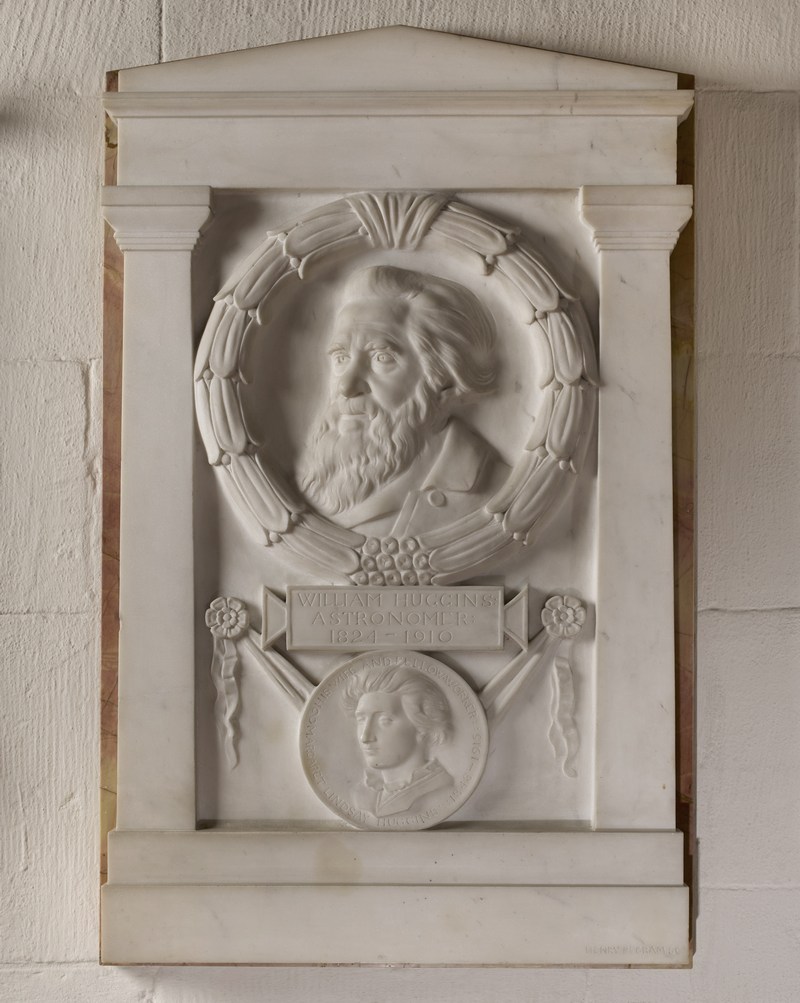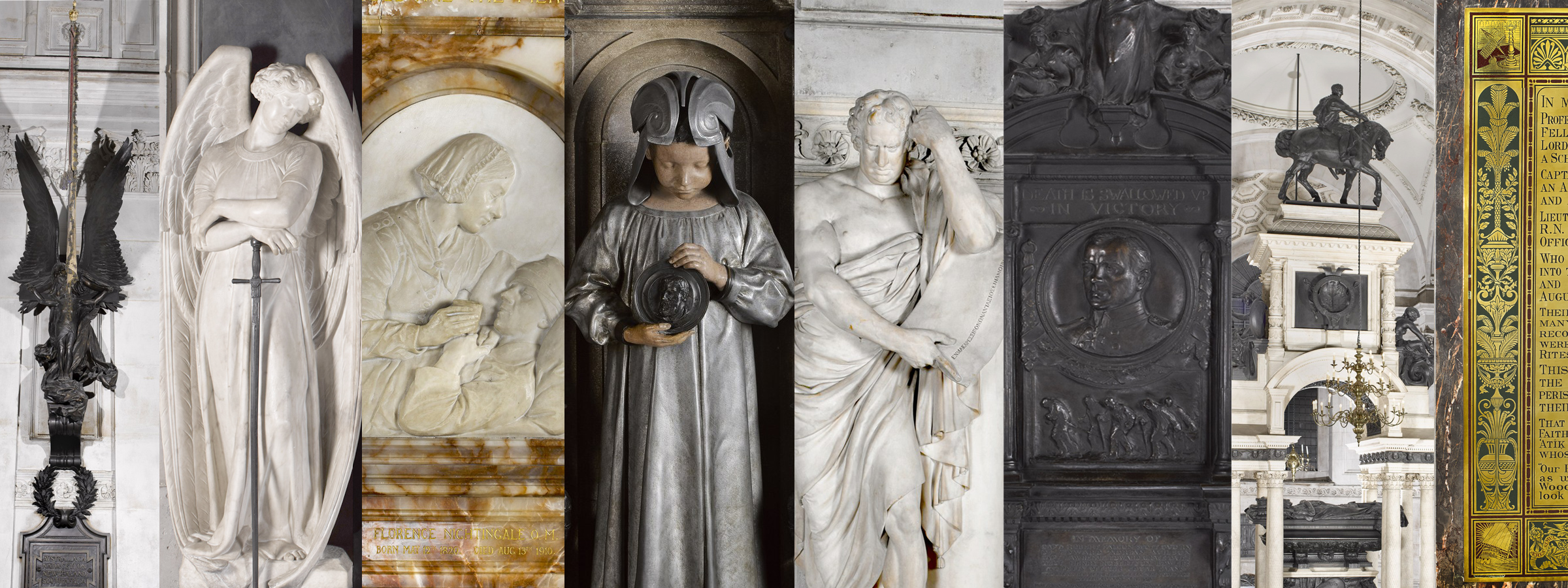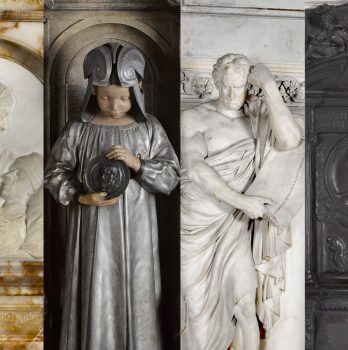Science Historian Dr Barbara J. Becker’s Response to the Monument to Sir William Huggins OM KCB PRS (1824–1910) & Lady Margaret Huggins (1848–1915) by Henry Alfred Pegram RA (c.1916)


Transcript
English amateur astronomer William Huggins owned (and played) a violin made by Antonio Stradivari in 1708. Since 1997, the loan of this instrument has been awarded to the winner of Belgium’s quadrennial Queen Elisabeth Competition. The music you hear is from Beethoven’s Violin Concerto played on the Huggins Strad by current winner, Stella Chen, of the United States.
William and Margaret Huggins were born into a world familiar with the night sky. Perhaps, like us, they grew up reciting this popular nursery rhyme.
Twinkle, twinkle, little star,
How I wonder what you are!
Up above the world so high,
Like a diamond in the sky.
When the blazing sun is gone,
When he nothing shines upon,
Then you show your little light,
Twinkle, twinkle, all the night.
Then the traveler in the dark
Thanks you for your tiny spark,
How could he see where to go,
If you did not twinkle so?[…]
Twinkle, twinkle, little star,
Twinkle, Twinkle, Little Star (1806), by Jane Taylor (1783–1824)
How I wonder what you are!
Written by Jane Taylor in 1806, its first verse sums up how little we knew back then about the “what” of these twinkling bodies. Other verses explain the “why” of stars, namely their role as guides for travelers in the dark; and its lyrical refrain reminds us that stars will always remain objects of wonder.
William Huggins helped change all that when he introduced spectrum analysis into the astronomer’s toolkit, thus giving them ready access to a code embedded in starlight itself and enabling them, at long last, to unravel the mystery of stars’ stuff and structure.
Born and raised in London, young William received little formal education, but the interest he developed in astronomy as a youth grew steadily over the years. Needing darker skies to observe the heavens, he moved to a suburb south of the Thames. There, he attached an observatory to his new house and began recording what he observed in a bound notebook.
In 1862, Huggins learned about efforts to analyze sunlight using a spectroscope. He later recalled,
That news was to me like the coming upon a spring of water in a dry and thirsty land.
Determined to do the same for stars, he took a leading role in developing the new astronomy we know today as astrophysics. He was the first to find that some nebulae are clouds of glowing gas; the first to observe the spectrum of a nova; and the first to use Doppler’s principle to measure a star’s motion in the line of sight, a challenging effort that proved to be his most important contribution to modern astronomy.
Although this work strained the limits of his instruments, he could not afford to replace them. Fortunately, influential allies persuaded the Royal Society to provide him with a state-of-the-art telescope on permanent loan. However, the gift proved a mixed blessing. William had always worked free of institutional constraints and expectations. Remaining worthy of the Society’s generosity was exhausting work.
Luckily, he found a lifelong companion in Margaret Lindsay Murray, a capable collaborative partner with the skills needed to keep him on the cutting edge. Her notebook entries reveal her initiative in all the observatory work. She later confided to a friend,
None of you know how hard we worked here just our two unaided selves.
After William died in 1910, Margaret began writing an account of their life and work together, but was unable to complete it before her own death in 1915. Her ashes rest with those of her husband at Golders Green Cemetery behind the bronze grille that she designed, inscribed with a verse from Psalms which she considered to be an “amazingly suitable” motto for spectroscopy.
In Thy Light shall we see light.
Psalm 36:9
On March 29, 1917, many scientific dignitaries attended the unveiling of this monument in the crypt of London’s St Paul’s Cathedral. Its bas relief profiles, carved by noted sculptor Henry Alfred Pegram, pay tribute to the couple’s contributions as “astronomer” and “fellow-worker”.
About Dr Barbara J. Becker
Barbara J. Becker received her PhD in history of science from The Johns Hopkins University. Until her retirement, she taught history of science at the University of California, Irvine.
Her research interests include the role of the amateur in the development of nineteenth-century professional astronomy, the redefining of disciplinary boundaries in the face of new knowledge and new practice, and the role of controversy in shaping the substance and structure of scientific knowledge.
Barbara is the author of the first scholarly biography of English amateur astronomer, William Huggins: Unravelling Starlight: William and Margaret Huggins and the Rise of the New Astronomy (Cambridge: CUP, 2011). In January 2015, this book was awarded the prestigious Donald E. Osterbrock Book Prize by the History of Astronomy Division of the American Astronomical Society. Barbara is also the editor of Selected Correspondence of William Huggins, 2 vols (London: Pickering & Chatto [now Taylor & Francis], 2014).
About the Monument
Henry Alfred Pegram‘s c.1916 monument to astronomers Margaret Lindsay, Lady Huggins (14 August 1848 – 25 March 1915) and Sir William Huggins (7 February 1824 – 12 May 910) represents one of the few memorials to a named woman in the pantheon of monuments at St Paul’s Cathedral: although the Dean and Chapter insisted that Lady Huggins appear below her husband in the monument, and at a smaller scale, in spite of the significant conceptual and practical contributions she made to their field of stellar spectroscopy, as the groundbreaking research of Barbara Becker, this week’s voice, has revealed.


